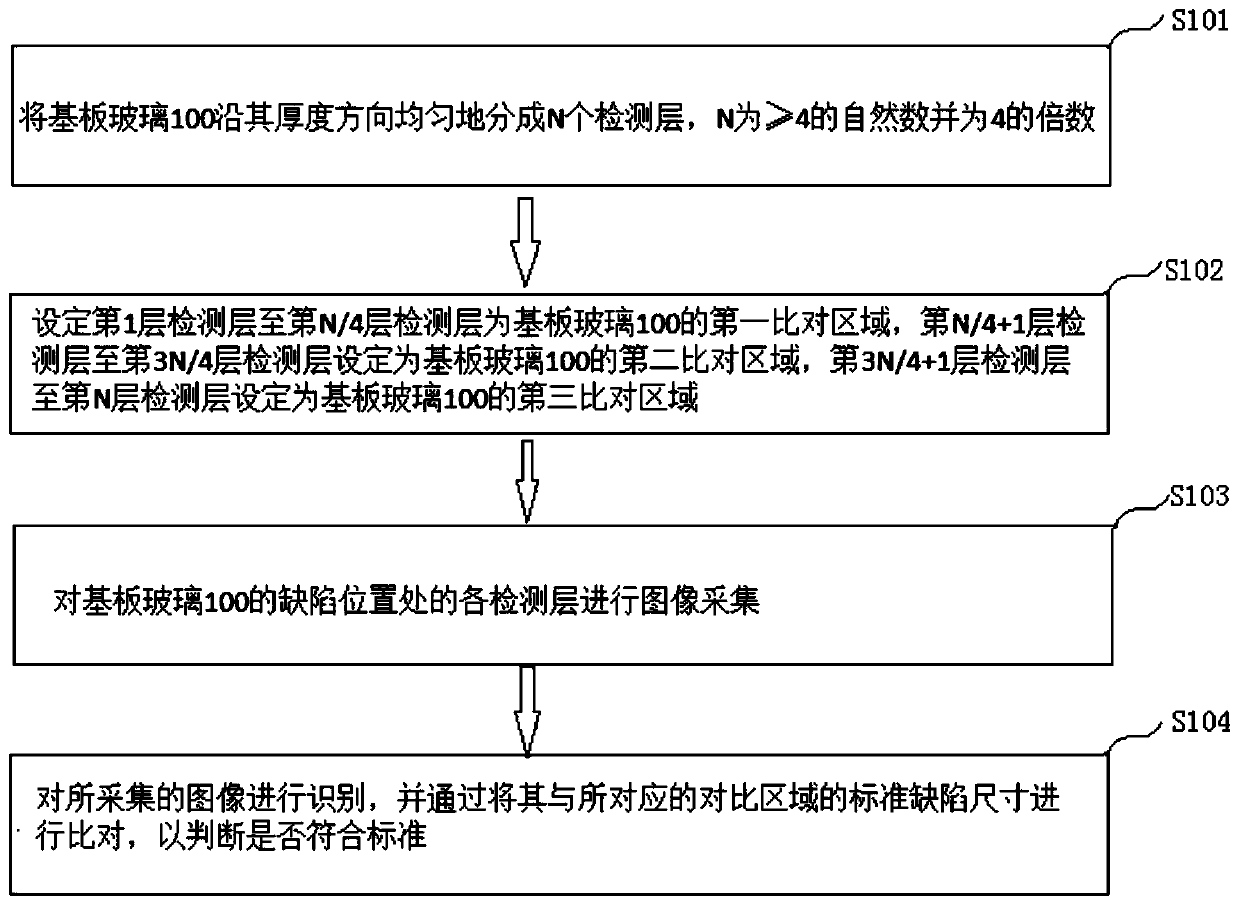Substrate glass defect detection method and device
A technology for glass defects and detection devices, applied in measurement devices, material analysis by optical means, instruments, etc., can solve the problems of small size, low inspection efficiency, and difficulty in judging specific levels and sizes.
- Summary
- Abstract
- Description
- Claims
- Application Information
AI Technical Summary
Problems solved by technology
Method used
Image
Examples
Embodiment Construction
[0031] Specific embodiments of the present disclosure will be described in detail below in conjunction with the accompanying drawings. It should be understood that the specific embodiments described here are only used to illustrate and explain the present disclosure, and are not intended to limit the present disclosure.
[0032] In the present disclosure, in the case of no contrary description, the used orientation words such as "inside and outside" refer to the inside and outside of the specific structural outline, and the used terms such as "first, second" etc. are only for Distinction of one element from another is not of order or importance.
[0033] Such as figure 1 As shown, the present disclosure provides a substrate glass defect detection method. The steps of the substrate glass defect detection method include: S101, the substrate glass 100 is evenly divided into N detection layers along its thickness direction, and N is a natural number ≥ 4 and be a multiple of 4; S...
PUM
| Property | Measurement | Unit |
|---|---|---|
| Thickness | aaaaa | aaaaa |
Abstract
Description
Claims
Application Information
 Login to View More
Login to View More - R&D
- Intellectual Property
- Life Sciences
- Materials
- Tech Scout
- Unparalleled Data Quality
- Higher Quality Content
- 60% Fewer Hallucinations
Browse by: Latest US Patents, China's latest patents, Technical Efficacy Thesaurus, Application Domain, Technology Topic, Popular Technical Reports.
© 2025 PatSnap. All rights reserved.Legal|Privacy policy|Modern Slavery Act Transparency Statement|Sitemap|About US| Contact US: help@patsnap.com


